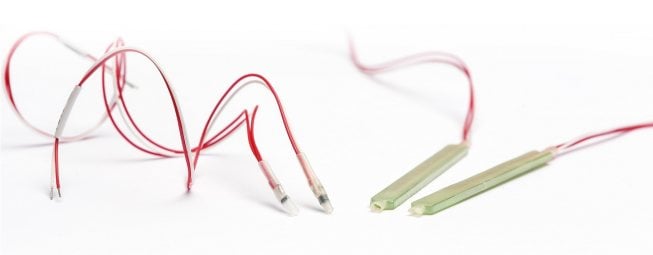
The motor is usually equipped with three PTC sensors connected in series to terminals T1 and T2. To explain the function we can look at an application with a motor speed controlled by a frequency converter. Thermistor relays have different characteristics and different functioning. PTC sensors are connected to the monitoring device at terminals T1 and T2 on the terminal box. One thermistor is sufficient for each winding as the current causing the heating is constant in each winding. The PTC sensors are one of the first parts to be installed in a motor. This induces the magnetic field, which makes the rotor move. Here, U1 and U2, V1 and V2, and W1 and W2 are the points where the generated voltages can be tapped off.Ī certain amount of current flows in each winding.

The supply voltage is connected to these terminals. The three phases on the terminal box can be interconnected either in star or in delta connection. The windings start and end in the motor’s terminal box. The windings are coiled around the stator slots with a shift of 120° between the windings. Normally the three-phase squirrel cage motor has three-phase windings U, V, W. The stator is a cast-iron housing with radiator fins with a core assembly of stamped, electrically insulated sheets. In asynchronous motors, the windings are located in the stator. The solid part is the stator, the rotating part is the rotor. This is a direct and therefore very accurate measurement method.Ī motor has stationary and rotating elements. Thermistor relays evaluate the resistance of PTC sensors integrated into the motor windings. Differences in the ambient temperatures between the panel board and the motor environmentĪccurate direct temperature monitoring in the motor windings is critical.Monitoring of all possible different disturbing influences like: This can be done by measuring the temperature with PTC sensors in the motor windings and/or bearings and monitoring these signals with a thermistor relay.Īdvantages of a directly monitored motor temperature To avoid this, motors should be protected against high temperatures.

The temperature in the thermal hot spots of a motor can be higher than expected due to motor location or insufficient cooling. The real temperature is not detected by these devices. Many motor protection devices protect motors from overheating and overload based on the motor current information. When a high temperature occurs in the windings, it protects motors from overheating, overload, and insufficient cooling. The thermistor relay monitors and measures the winding temperature of electrical motors. Features and applications of thermistor relays.


 0 kommentar(er)
0 kommentar(er)
